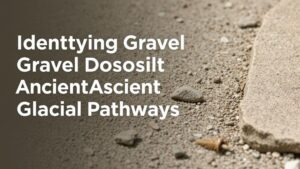Spotting Quartz Outcrops in Desert Regions as Clues to Gold Deposits
Spotting Quartz Outcrops in Desert Regions as Clues to Gold Deposits
In the quest for gold, mineral exploration has long turned to a variety of geological indicators. One such indicator is quartz, particularly its outcrops in arid desert regions. Understanding the characteristics of quartz formations can aid in the identification of potential gold deposits. This article delves into the relationship between quartz outcrops and gold deposits, providing insights and practical applications for geologists and prospectors.
The Geological Significance of Quartz
Quartz is a common mineral found in Earths crust, primarily composed of silicon dioxide (SiO2). It exhibits remarkable resistance to weathering, making it a prevalent feature in desert environments. Its presence can indicate underlying geological processes conducive to gold formation. In fact, many gold ores exist within or adjacent to quartz veins.
Geologically, quartz can form through several mechanisms, including:
- Magmatic processes, where quartz crystallizes from cooling magma.
- Hydrothermal activity, which relates to the movement of hot, mineral-rich water through rock fractures.
- Weathering processes, where quartz survives erosion while surrounding minerals degrade.
Quartz Outcrops as Indicators of Gold
In arid landscapes, quartz outcrops can signify potential gold deposits due to the following relationships:
- Hydrothermal Veins: Many gold deposits form in hydrothermal quartz veins. These veins typically contain gold along with other sulfide minerals that precipitated from the mineral-rich fluids.
- Secondary Enrichment: Over time, primary gold deposits can undergo weathering and leaching, concentrating gold in the remaining quartz.
- Structural Controls: Quartz outcrops can highlight geological structures such as faults and folds that may host gold deposits. Such structures can act as conduits for mineralized fluids.
Identifying Quartz Outcrops
Geologists can utilize various methods to identify quartz outcrops in desert environments:
- Aerial Imagery: Satellite and aerial imagery can reveal quartzs distinctive reflective properties, helping distinguish it from surrounding materials.
- Field Surveys: Physical examination of terrain allows geologists to evaluate the mineralogical composition on the ground level.
- Geochemical Sampling: Collecting rock samples from quartz outcrops can provide data regarding gold-bearing minerals through assays.
Real-World Examples
Several prominent mining operations have leveraged quartz outcrops for gold exploration in desert regions:
- Carlin Trend, Nevada: Known for its world-class gold deposits, the Carlin Trend features expansive areas of quartz outcrops that align with major gold-mineralized structural zones.
- Super Pit, Kalgoorlie, Australia: This open-pit gold mine has rich veins of quartz that command attention due to their association with substantial gold yields.
Actionable Takeaways
For prospectors and geologists aiming to harness the potential of quartz outcrops in desert regions, the following actionable strategies can enhance exploration efforts:
- Use aerial surveys in conjunction with on-ground sampling to create a comprehensive exploration strategy.
- Develop an understanding of local geology to identify specific quartz formations that are known to host gold deposits.
- Prioritize regions where recent hydrothermal activity has occurred, as these are often prime candidates for gold mineralization.
To wrap up, while spotting quartz outcrops is not a guaranteed indicator of gold deposits, their presence in desert regions often hints at the geological processes that can lead to gold formation. By developing proficiency in recognizing and analyzing these outcrops, exploration efforts can be significantly optimized.

